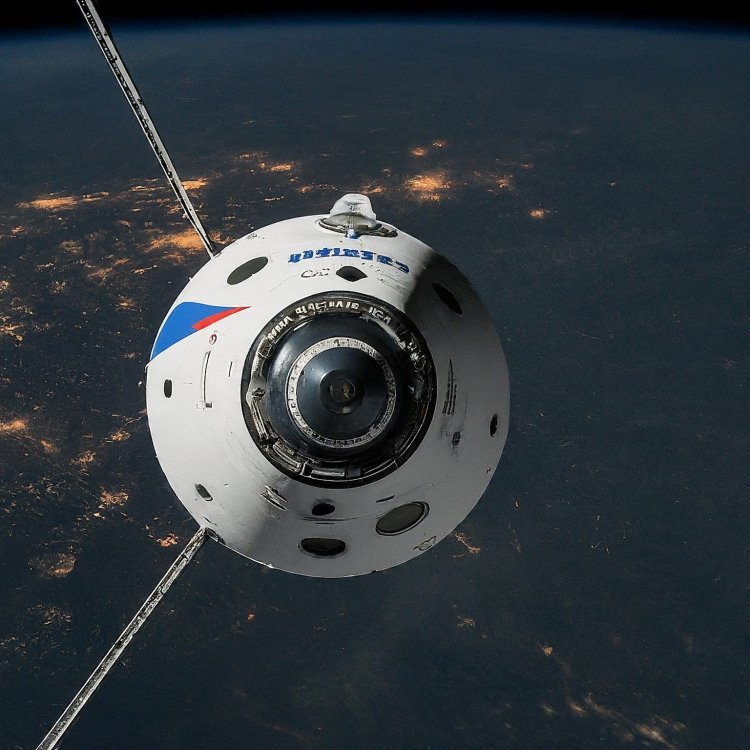NASA Scrambles to Fix Boeing's Starliner After Failed Orbital Test Flight
NASA's Boeing Starliner faces a major setback after a failed orbital test flight. Software glitches force premature mission termination, raising concerns about the future of the Commercial Crew Program.

In a major setback for America's ambitions in human spaceflight, Boeing's CST-100 Starliner capsule encountered critical software glitches during its uncrewed Orbital Flight Test 2 (OFT-2) mission, forcing NASA to prematurely end the mission and bring the spacecraft back to Earth. This incident has cast a shadow over Boeing's role in the Commercial Crew Program (CCP), a critical initiative aimed at returning American astronauts to launch from U.S. soil.
A Brief History of the CCP and Boeing's Starliner
The CCP, established in 2010, tasked private companies like Boeing and SpaceX with developing spacecraft capable of transporting astronauts to and from the International Space Station (ISS). This marked a significant shift in American space policy, aiming to end reliance on Russian Soyuz capsules for astronaut transportation.
Boeing's Starliner, designed to carry up to seven astronauts, faced several delays and technical challenges throughout its development. Its first uncrewed test flight, OFT-1, in December 2019, experienced a software anomaly that prevented it from docking with the ISS. Despite concerns, NASA approved a second attempt, OFT-2, with the expectation of a successful mission.
OFT-2: A Mission Cut Short by Software Bugs
The OFT-2 mission launched on Thursday, July 30th, 2024, atop a United Launch Alliance Atlas V rocket. Initially, the mission appeared to be progressing smoothly. However, shortly after reaching orbit, the Starliner encountered software issues that prevented it from achieving its planned orbital insertion maneuver. This maneuver was crucial for reaching the correct altitude and trajectory to rendezvous with the ISS.
With the mission parameters compromised, NASA and Boeing officials made the decision to prioritize the safe return of the spacecraft. Starliner fired its thrusters to perform a deorbit burn, aiming for a landing at White Sands Missile Range in New Mexico. The capsule successfully touched down on Sunday, August 3rd, 2024.
Investigating the Cause: What Went Wrong with Starliner's Software?
The root cause of the software glitches that plagued OFT-2 remains under investigation. Both NASA and Boeing engineers are diligently working to identify the specific issues and implement corrective measures. Some potential areas of focus include:
- Coding Errors: Software bugs within the Starliner's flight control system could have led to the malfunction. A thorough review of the code is necessary to pinpoint any errors or inconsistencies.
- Sensor Data Misinterpretation: Faulty or misinterpreted data from the spacecraft's sensors could have triggered the software to initiate incorrect commands. Ensuring accurate sensor readings and proper data processing is crucial.
- Redundancy Issues: The software may have lacked sufficient redundancy, meaning a single point of failure could have crippled the entire system. Implementing robust redundancy measures is essential for mission safety.
Impact on NASA's Commercial Crew Program
The Starliner's failed OFT-2 mission raises significant questions about the program's timeline and overall success. Here's how it might impact the CCP:
- Delays and Uncertainty: Further testing and potential redesigns of Starliner's software are likely to cause delays in the program's schedule. This could push back planned crewed missions with Starliner, impacting the overall goal of crew rotation on the ISS.
- Increased Scrutiny: Regulatory agencies may conduct a more rigorous review of Boeing's development and testing procedures. This scrutiny could lead to stricter requirements for future missions.
- Highlighting SpaceX's Success: SpaceX's Crew Dragon capsule has successfully completed several missions to the ISS, solidifying its position as the primary provider of crew transportation services for NASA. This could potentially shift focus and resources away from Starliner.
The Road Ahead: Restoring Confidence in Starliner
Regaining public and industry confidence in Starliner will be paramount for Boeing's future in the CCP. To achieve this, a transparent and comprehensive investigation into the OFT-2 failure is crucial. Additionally, Boeing must demonstrate a commitment to implementing robust corrective measures and undergoing rigorous re-testing before attempting future missions.
Looking Forward: The Future of American Human Spaceflight
While the Starliner setback is a significant hurdle, it shouldn't diminish the overall progress of the CCP. The program has spurred innovation and competition within the American space industry. With continued dedication and collaboration, NASA and its commercial partners can ensure the long-term viability of American human spaceflight endeavors.
What's Your Reaction?




















